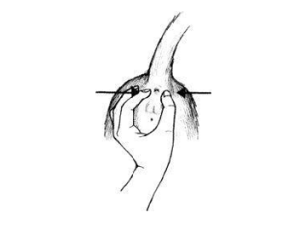The Classic Comprehensive Handbook of Cat Care
DIGESTIVE SYSTEM
(GASTROINTESTINAL TRACT): ANAL SACCULITIS
Impaction of the anal sacs sometimes accompanied by infection is an infrequent problem in cats. The most common signs of anal saccultis are scooting the anal area along the ground and excessive grooming around the anal area and tail base. Scooting is only occasionally a sign of worms.
An unusual twitching of the skin over the back or surprise “attacks” at the tail base can sometimes be explained by overly full anal sacs. Signs of simple anal sac impaction can usually be relieved by expressing the contents of the sacs. You can do this yourself. Use one hand to hold up the cat’s tail. Hold a disposable cloth or tissue in the other hand. Place your thumb externally over one anal sac and your finger over the other. Press in and apply firm pressure over the sacs. This causes the contents to be expressed through the anal sac openings into the tissue so they can be discarded.
EXPRESSING THE ANAL SACE
If impacted anal sacs are not emptied, one or both may become infected. Infected sacs may be painful and result in constipation due to the cat’s reluctance to experience a painful bowel movement.
You may be able to express blood-tinged material or pus from the sac. If you don’t notice the problem at this stage, you may later see an abscess or swelling externally at one side or the other of the anus. Infected anal sacs are best treated by a veterinarian. If they have not yet abscessed, it may be possible to treat them by expression of the infected contents and with antibiotics alone. If they are abscessed, surgical drainage is usually necessary.
